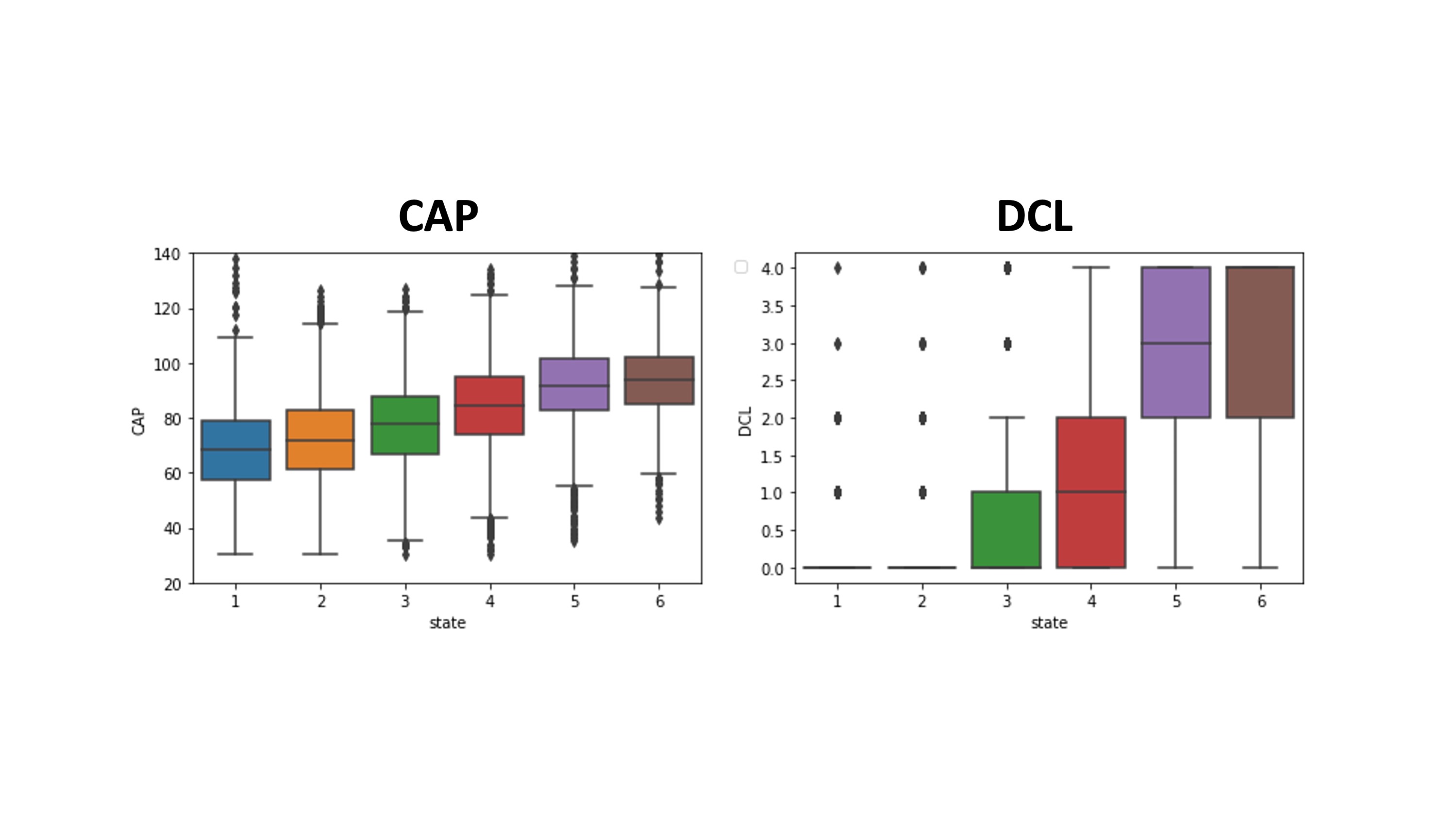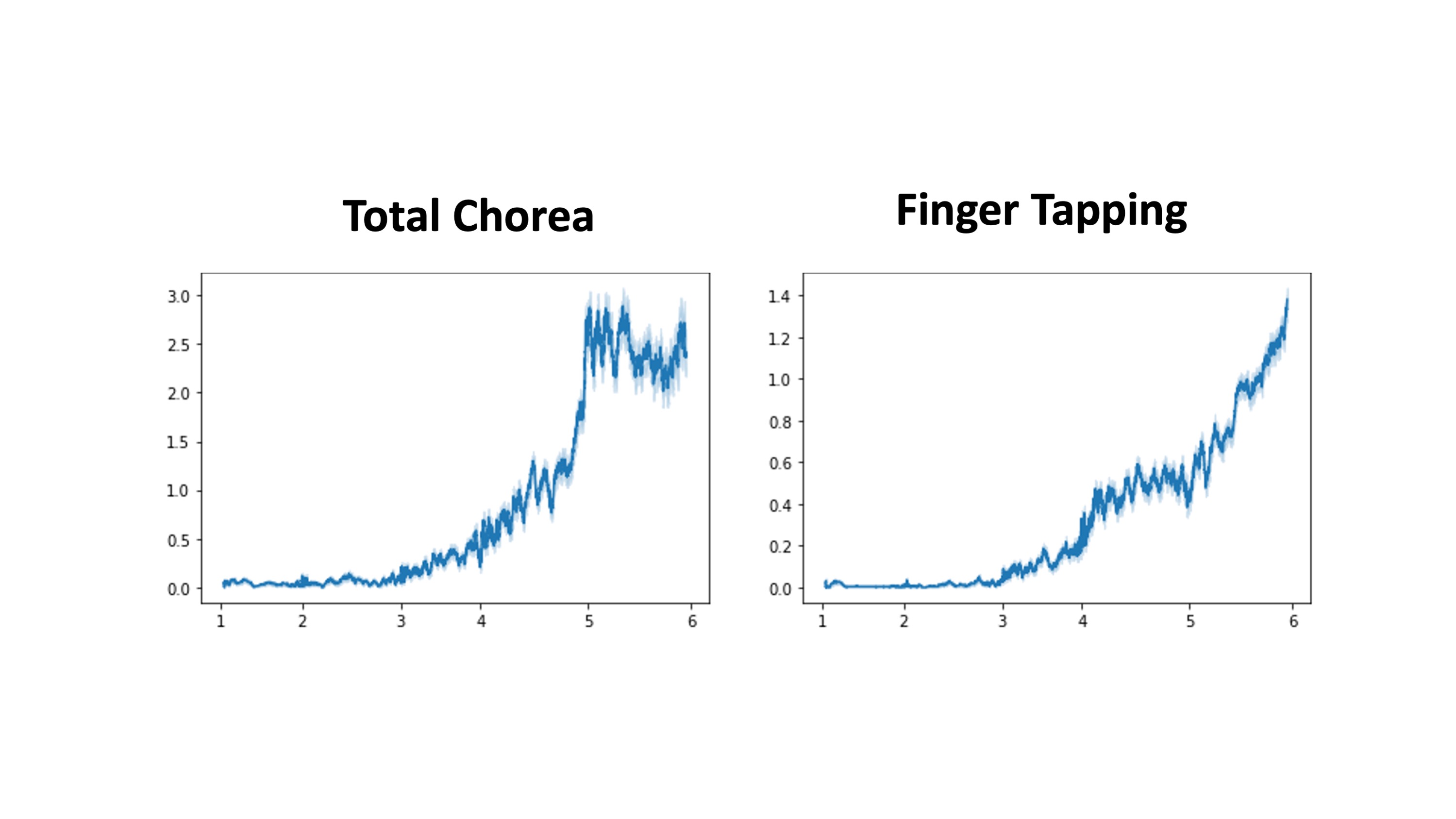Category: Huntington's Disease
Objective: Our aim is to build an early state HD progression model (EHDPM), a sub-model to Integrated Huntington’s Disease Progression Model (IHDPM) [1] to identify markers of disease progression prior to onset of clinical symptoms.
Background: Given the need to initiate therapeutic modalities early in disease, EHDPM identifies assessments that are likely to change early in disease course, thus help with endpoint strategy for clinical trials. IHDPM, designed to cover disease progression over entire life span, led to a nine-state progression model: first two states correspond to the early disease the next three states to the transitional period, and the final three to the late disease states. EHDPM cohort includes observations that belong to the first three states of the IHDPM model.
Method: We integrated clinical and morphometric data from six HD studies. Feature selection identified clinical and morphometric measures most capable of tracking HD progression in early stages, which were: finger tapping, chorea; putamen, caudate, subcortical grey and third ventricle volume, and the Symbol Digit Modalities test (SDMT). We observed significant interaction of age for all imaging variables and SDMT. For age adjustment, we used the normative values of SDMT from [2] and calculated the normative values for imaging variables. For dimensionality reduction, we use the Bayesian robust latent variable analysis [4]. We used continuous time HMMs [5] for the disease progression model. The number of states to include in EHDPM were determined by cross-validation (CV).
Results: The likelihood, AIC and BIC in the CV experiments showed improvement as the number of states in the model increased, most remarkably for models up to six states, and adding more states to the model yielded only minimal gains. Figure 1 shows the distribution of CAP scores and UHDRS DCL4 score across the six states. Figure 2 shows the finger tapping scores and the total chorea score across the six states. We will analyze the model for cognitive and imaging assessments to determine changes occurring at each state.
Conclusion: EHDPM is a novel machine learning based model to detect early changes in cognitive, motor and imaging aspects of HD progression. The proposed model may enhance the recruitment stratification and end point selection strategy for HD clinical trials especially in early stages of the disease.
References: 1) Sun Z, Ghosh S, Li Y, Cheng Y, Mohan A, Sampaio C, Hu J. A probabilistic disease progression modeling approach and its application to integrated Huntington’s disease observational data. JAMIA open. 2019 Apr;2(1):123-30.
2) Mills JA, Long JD, Mohan A, Ware JJ, Sampaio C. Cognitive and motor norms for Huntington’s disease. Archives of Clinical Neuropsychology. 2020 Sep;35(6):671-82.
3) LaMontagne PJ, Benzinger TL, Morris JC, Keefe S, Hornbeck R, Xiong C, Grant E, Hassenstab J, Moulder K, Vlassenko AG, Raichle ME. OASIS-3: longitudinal neuroimaging, clinical, and cognitive dataset for normal aging and Alzheimer disease. MedRxiv. 2019 Jan 1.
4) Severson KA, Ghosh S, Ng K. Unsupervised learning with contrastive latent variable models. InProceedings of the AAAI Conference on Artificial Intelligence 2019 Jul 17 (Vol. 33, No. 01, pp. 4862-4869).
5) Liu YY, Li S, Li F, Song L, Rehg JM. Efficient learning of continuous-time hidden markov models for disease progression. Advances in neural information processing systems. 2015;28.
To cite this abstract in AMA style:
E. Eyigoz, S. Sathe, J. Warner, S. Dey, T. Li, P. Rojas, C. Sampaio, J. Hu. Analyzing early states of HD progression using a machine learning driven approach [abstract]. Mov Disord. 2022; 37 (suppl 2). https://www.mdsabstracts.org/abstract/analyzing-early-states-of-hd-progression-using-a-machine-learning-driven-approach/. Accessed December 27, 2025.« Back to 2022 International Congress
MDS Abstracts - https://www.mdsabstracts.org/abstract/analyzing-early-states-of-hd-progression-using-a-machine-learning-driven-approach/


